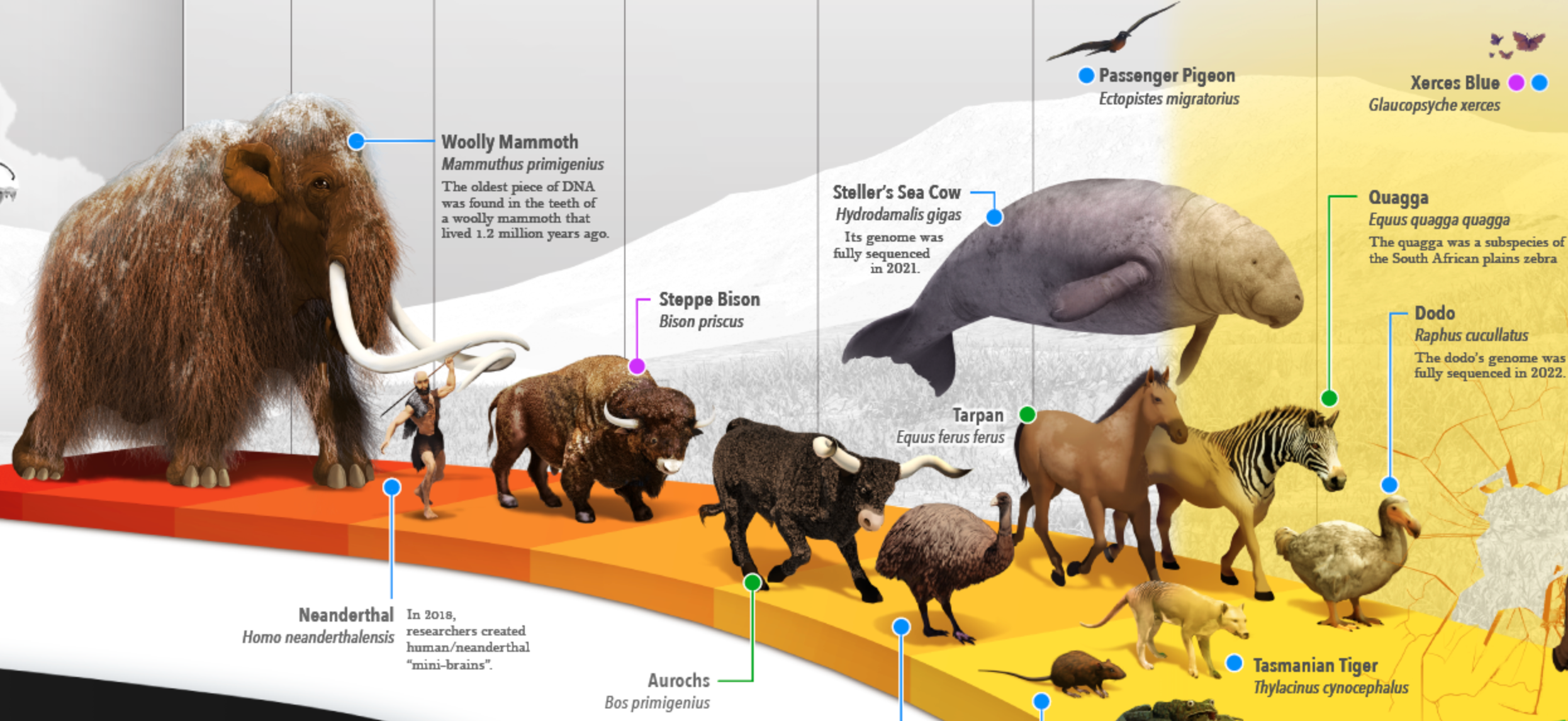
Humanity has been tinkering with natural life for thousands of years. And we’ve gotten pretty good at it! From modified bacteria to synthetic biology. However, despite many achievements in the area of genetic engineering, we have not figured out how to bring extinct animal species back to life. But it’s something scientists are working on and there’s now a field of biology focused on reviving past species. Here is a fascinating look at the field of resurrection biology, also known as de-extinction.
What are the benefits of de-extinction?
Anyone who has seen the film Jurassic Park may wonder — what good comes from bring back extinct animals? There are actually many research benefits that could come with de-extinction. For example, some scientists believe studying previously extinct animals and looking at how they function could help fill some gaps in our current theories around evolution.
Related: Explainer: Earth’s Tectonic Plates
De-extinction could also have a positive impact on the environment. That’s because when an animal goes extinct, its absence has a ripple effect on all the flora and fauna involved in that animal’s food web. Because of this, reintroducing previously extinct species back into their old ecosystems could help rebalance and restore off-kilter environments.
How does it work?
The key element that’s needed to re-create a species is its DNA. Unfortunately, DNA slowly degrades, and once it’s gone completely, there’s no way to recover it. Researchers believe DNA has a half-life of 521 years, so after 6.8 million years, it’s believed to be completely gone.
That’s why species like dinosaurs have virtually no chance of de-extinction. However, many organisms that went extinct more recently, like the dodo, could have a chance of conservation.
When it comes to de-extinction, there are three main techniques:
Cloning
This is the only way to create an exact DNA replica of something.
However, a complete genome is needed for this, so this form of genetic rescue is most effective with recently-lost species, or species that are nearing extinction.
Genome editing
Genome editing is the manipulation of DNA to mimic extinct DNA.
There are several ways to do this, but in general, the process involves researchers manipulating the genomes of living species to make a new species that closely resembles an extinct one.
Because it’s not an exact copy of the extinct species’ DNA, this method will create a hybrid species that only resembles the extinct animal.
Back-breeding
A form of breeding where a distinguishing trait from an extinct species (a horn or a color pattern) is bred back into living populations.
This requires the trait to still exist in some frequency in similar species, and the trait is selectively bred back into popularity.
Like genome editing, this method does not resurrect an extinct species, but resurrects the DNA and genetic diversity that gave the extinct species a distinguishing trait.




























